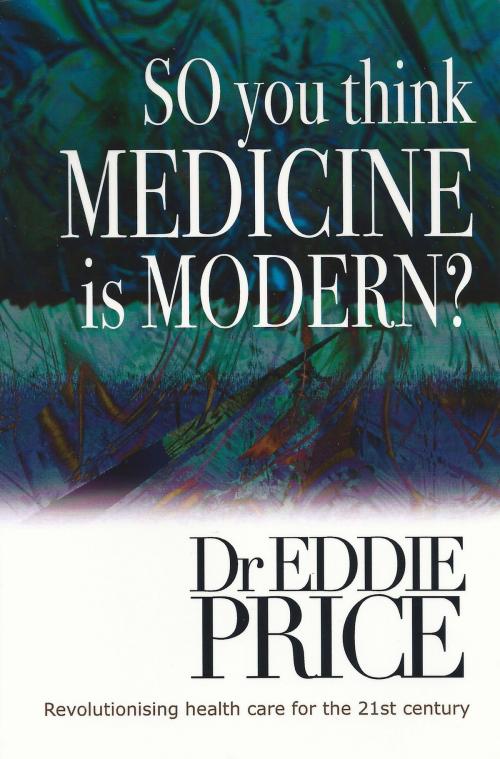So You Think Medicine is Modern
Revolutionising Health Care for the 21st Century
Nonfiction, Science & Nature, Science, Other Sciences, System Theory, Health & Well Being, Medical, Patient Care, Health Care Delivery| Author: | Dr Eddie Price | ISBN: | 9781925271362 |
| Publisher: | Australian eBook Publisher | Publication: | April 22, 2015 |
| Imprint: | Language: | English |
| Author: | Dr Eddie Price |
| ISBN: | 9781925271362 |
| Publisher: | Australian eBook Publisher |
| Publication: | April 22, 2015 |
| Imprint: | |
| Language: | English |
Disappointed by the lack of uptake in the utilisation of Health Outcomes into routine day-to-day medical practice, Dr Price was confronted by the objection that as these measures were patients’ responses to questions they were “subjective” and therefore not good science. Medicine, said the doctors, was based in science, which was objective.This made no sense to Dr Price, who considered himself an advocate for scientific medicine.He vowed to find the science that would prove that “Outcomes Medicine” was not only based on good science but the latest science.This led him on a journey from Systems Theory to Quantum Mechanics, to Dissipative Structures, to Einstein and e = mc2. He read about fractals, Mandelbrot, and the work of the world-famous Santa Fe Institute set up by “particle physics” Nobel Prize Winner, Murray Gell-Mann, which developed the latest science Complexity Science.Dr Price concluded that the human body is a Complex Adaptive System (CAS) and realised that there was an additional in-between “state of matter” between solid and fluid.This, he called “SOPHTID”, the mnemonic for (S)Second (O)Order (PH)Phase (T)Transition (ID)Identity, a state which enables fractals and power laws to come about or emerge.Dr Price further contended this was a “functional” state that not only was consistent with Health Outcomes “functional” measurements, but enabled information generation and with the aid of the solid and fluid parts of the cell, information processing or cognition.Dr Price’s hypothesis on the SOPHTID state has now been supported by Longo & Montévil in their 2014 book, Perspectives on Organisms, where they call this “SOPHTID state”, Extended Critically.Thus, with this scientific backing, “Outcomes Medicine” is now best called “Complexity Medicine”, and is backed by the latest science.It enables a new form of Digitised Medicine that will revolutionise healthcare improving Health Outcomes and drastically reducing costs.
Disappointed by the lack of uptake in the utilisation of Health Outcomes into routine day-to-day medical practice, Dr Price was confronted by the objection that as these measures were patients’ responses to questions they were “subjective” and therefore not good science. Medicine, said the doctors, was based in science, which was objective.This made no sense to Dr Price, who considered himself an advocate for scientific medicine.He vowed to find the science that would prove that “Outcomes Medicine” was not only based on good science but the latest science.This led him on a journey from Systems Theory to Quantum Mechanics, to Dissipative Structures, to Einstein and e = mc2. He read about fractals, Mandelbrot, and the work of the world-famous Santa Fe Institute set up by “particle physics” Nobel Prize Winner, Murray Gell-Mann, which developed the latest science Complexity Science.Dr Price concluded that the human body is a Complex Adaptive System (CAS) and realised that there was an additional in-between “state of matter” between solid and fluid.This, he called “SOPHTID”, the mnemonic for (S)Second (O)Order (PH)Phase (T)Transition (ID)Identity, a state which enables fractals and power laws to come about or emerge.Dr Price further contended this was a “functional” state that not only was consistent with Health Outcomes “functional” measurements, but enabled information generation and with the aid of the solid and fluid parts of the cell, information processing or cognition.Dr Price’s hypothesis on the SOPHTID state has now been supported by Longo & Montévil in their 2014 book, Perspectives on Organisms, where they call this “SOPHTID state”, Extended Critically.Thus, with this scientific backing, “Outcomes Medicine” is now best called “Complexity Medicine”, and is backed by the latest science.It enables a new form of Digitised Medicine that will revolutionise healthcare improving Health Outcomes and drastically reducing costs.















